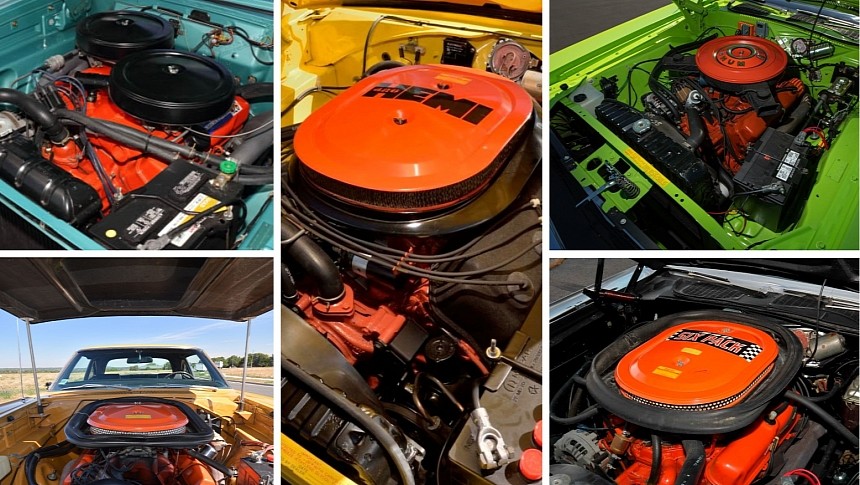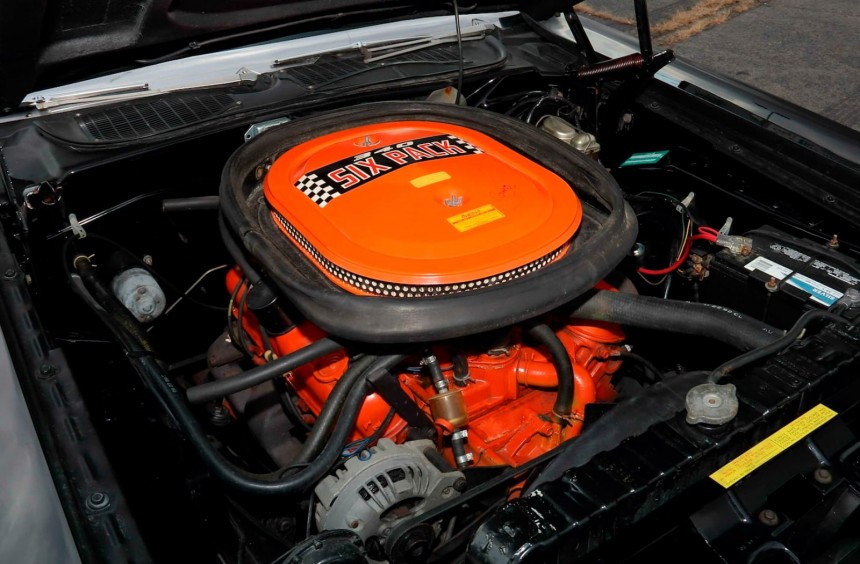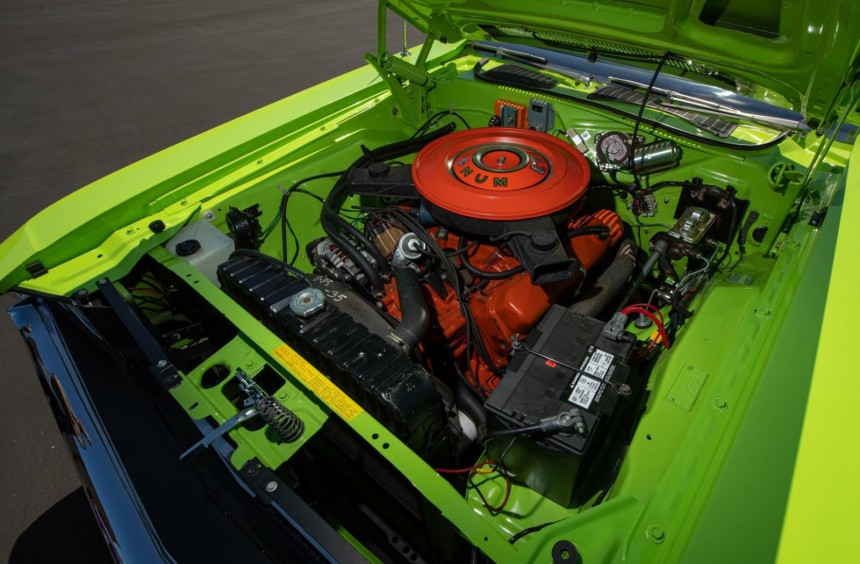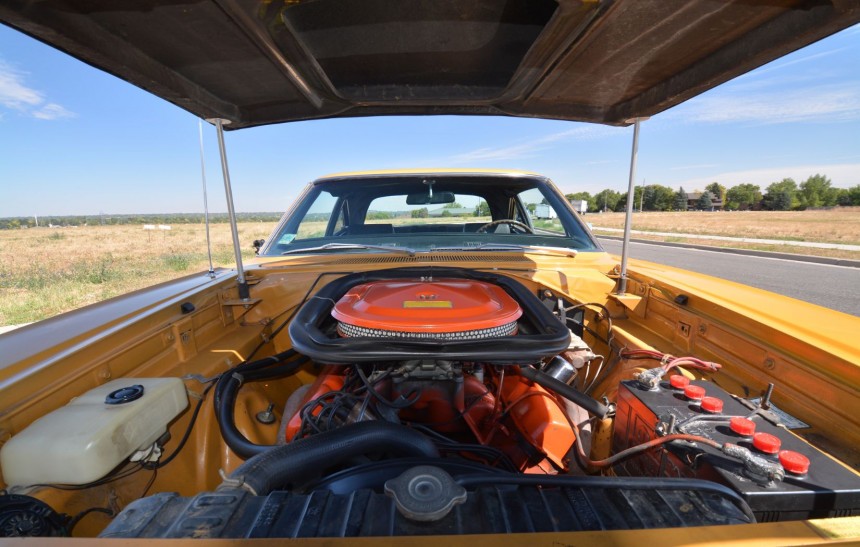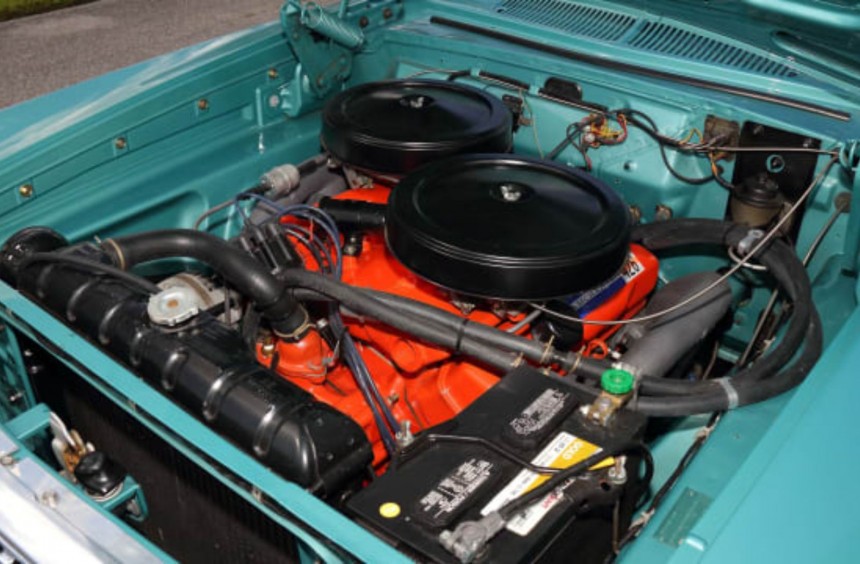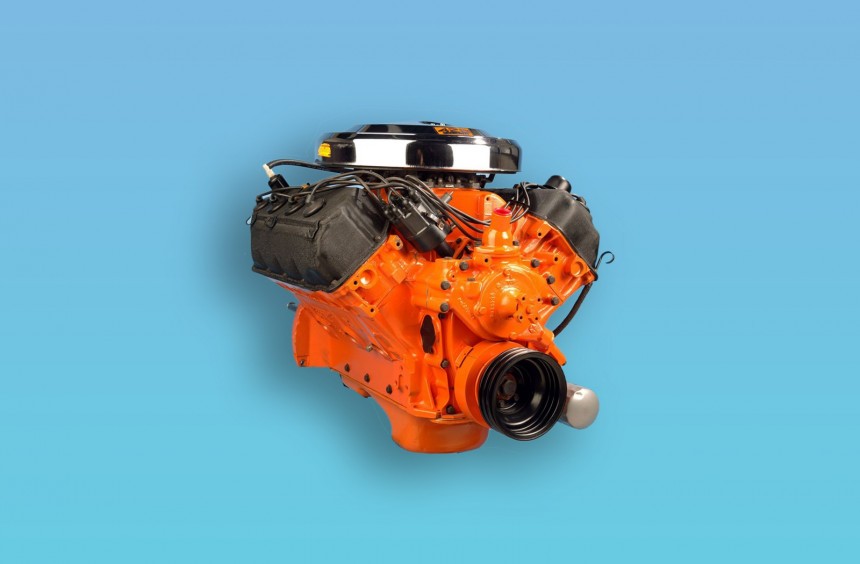Chrysler's Dodge and Plymouth often led the charge during the original muscle car era thanks to not just the timeless design of their models but the terrific high-performance engines hidden under their hoods.
During the 1960s and the first two years of the 1970s, American carmakers produced some spectacular cars that became automotive legends.
Initially dubbed super cars but now widely known as muscle cars, these icons were born from the simple idea of transplanting big and powerful V8s from full-size land yachts into the engine bays of intermediate (or smaller) models.
All three of Detorit's corporations, plus Indiana-based AMC, joined the muscle car party, unleashing ever-cooler models equipped with ever-more-powerful V8s.
With its Dodge and Plymouth divisions, the Chrysler Corporation introduced some of the most popular models of the era and equipped them with some of the most exciting V8s ever produced during that memorable period.
We all remember the 426 HEMI, so you don't have to scroll down to find out which classic Mopar V8 was the best, but that wasn't the corporation's only high-performance, eight-cylinder legend.
The first entry on our list was part of the LA lineage of pushrod OHV small-block, V-shaped engines that powered a vast range of Chrysler Corporation vehicles from 1964 to 2003.
From its introduction in late 1967 to the dawn of the muscle car era in the early 1970s, the most famous member of this engine family was the 340-ci (5.6-liter) V8.
Conceived as a relatively lightweight high-performance version of the standard 318-ci (5.2-liter), the 340 was not only bored out but fitted with a wide range of performance goodies like high-flow heads, bigger ports, or a two-level intake manifold.
The small-block initially made 275 hp and 340 lb-ft (461 Nm) of torque, but by 1970, when the improved, triple two-barrel carb (aka Six Pack) version came out, those figures went up to 290 hp and 345 lb-ft (468 Nm) of torque.
During its heyday, the 340 was available in all Plymouth and Dodge muscle cars, from the small Duster 340 and Dart GTS to the intermediate Road Runner, Superbee, or Charger.
Part of the B engine family produced from 1958 to 1978, the 383-ci (6.2-liter) big block was initially used in select Chrysler full-size models.
During the late 1960s, it morphed into a high-performance V8, reaching its peak output starting with the 1968 model year.
Equipped with a 4-barrel Carter carburetor in addition to cylinder heads, camshaft, and exhaust manifolds (slightly different in some models) borrowed from the larger 440 Magnum, this version of the 383 was rated at 335 hp and a healthy 425 lb-ft (576 Nm) of twist between 1968 and 1970.
Best known as the 383 Magnum, it was also called Golden Commando and Road Runner in some Plymouth models.
The engine powered a multitude of Dodge and Plymouth pony cars and intermediates, including the Cuda, Challenger, Charger, Super Bee, or Road Runner.
Launched in 1965 and produced until 1978, the 440-ci (7.2-liter) V8 was the last and biggest member of the RB engine family.
From 1967 to 1970, its high-performance version equipped with a four-barrel carb was rated at 375 hp and 480 lb-ft (651 N-m) of torque.
But that variant dubbed 440 Magnum (Dodge), Super Commando (Plymouth), or TNT (Chrysler) wasn't the top-performing 440.
Mid-way through the 1969 model year, Dodge and Plymouth launched a new 440 version meant to bridge the gap between the standard 383 Magnum and the expensive 426 HEMI in their budget-friendly Super Bee and Road Runner muscle cars.
Called 440 Six Pack (Dodge) or 440 Six Barrel (Plymouth), the new V8 featured an aluminum Edelbrock manifold with a trio of two-barrel Holley carburetors.
During regular operation, the engine only used the central 350-cfm carb, but when mashing the throttle, the other two 500-cfm units kicked in, unleashing 390 hp and no less than 490 lb-ft (664 Nm) of torque.
By 1970, the legendary 440 Six Pack was added to the optional engine lists of other models, including the Charger, Challenger, Coronet, GTX, and Barracuda.
The next entry on our list is the oldest and most underrated Mopar V8 engine from the muscle car era.
In 1962, four years before the 426 HEMI became Chrysler's all-conquering high-performance engine, the corporation introduced the RB-based Max Wedge.
Initially, it displaced 413 ci (6.77 liters), just like the largest big-block available at the time, but unlike the standard 413, the Max Wedge received beefier internals, new heads with larger ports and valves, a special high-lift cam, and a new intake with 15-inch (381 mm) runners and two 650-cfm Carter carbs.
A year later, it was enlarged to 426 ci (7.0 liters), reaching its peak power potential. Available in two compression ratio versions, the V8 made 415 or 425 hp and 480 lb-ft (651 Nm).
Called either Ram-Charger 426 (Dodge) or Super Stock 426 (Plymouth), it didn't benefit from the marketing of the succeeding HEMI.
The orange monster was only available as an option for drag racing-oriented (but technically road-legal) versions of B-body Dodges and Plymouths from 1963 to 1964.
Affectionately known as the Elephant engine, this icon was initially created to help Plymouth and Dodge dominate NASCAR.
Though it was ready to be used in the 1965 season, the competition's governing body rewrote the rule book and banned the engine since it was unavailable in production models.
Therefore, starting with the 1966 model year, the 426 HEMI was available in street guise as an expensive option for Plymouth and Dodge intermediates.
Compared to the race version, the street HEMI was equipped with a pair of Carter carbs, had a lower compression ratio, and internals made from standard materials.
Despite that, it was rated at 425 hp and 490 lb-ft (664 Nm) of torque - figures that were actually higher when measured on a dyno.
Over the next five years, the HEMI became available in all high-performance Mopar intermediates and the Cuda and Challenger pony cars.
Until it was discontinued at the end of the 1971 model year, the 426 HEMI was considered the best high-performance V8 that money could buy by the majority of enthusiasts.
Initially dubbed super cars but now widely known as muscle cars, these icons were born from the simple idea of transplanting big and powerful V8s from full-size land yachts into the engine bays of intermediate (or smaller) models.
All three of Detorit's corporations, plus Indiana-based AMC, joined the muscle car party, unleashing ever-cooler models equipped with ever-more-powerful V8s.
With its Dodge and Plymouth divisions, the Chrysler Corporation introduced some of the most popular models of the era and equipped them with some of the most exciting V8s ever produced during that memorable period.
We all remember the 426 HEMI, so you don't have to scroll down to find out which classic Mopar V8 was the best, but that wasn't the corporation's only high-performance, eight-cylinder legend.
340 Small Block
From its introduction in late 1967 to the dawn of the muscle car era in the early 1970s, the most famous member of this engine family was the 340-ci (5.6-liter) V8.
Conceived as a relatively lightweight high-performance version of the standard 318-ci (5.2-liter), the 340 was not only bored out but fitted with a wide range of performance goodies like high-flow heads, bigger ports, or a two-level intake manifold.
The small-block initially made 275 hp and 340 lb-ft (461 Nm) of torque, but by 1970, when the improved, triple two-barrel carb (aka Six Pack) version came out, those figures went up to 290 hp and 345 lb-ft (468 Nm) of torque.
During its heyday, the 340 was available in all Plymouth and Dodge muscle cars, from the small Duster 340 and Dart GTS to the intermediate Road Runner, Superbee, or Charger.
383 Magnum
During the late 1960s, it morphed into a high-performance V8, reaching its peak output starting with the 1968 model year.
Equipped with a 4-barrel Carter carburetor in addition to cylinder heads, camshaft, and exhaust manifolds (slightly different in some models) borrowed from the larger 440 Magnum, this version of the 383 was rated at 335 hp and a healthy 425 lb-ft (576 Nm) of twist between 1968 and 1970.
Best known as the 383 Magnum, it was also called Golden Commando and Road Runner in some Plymouth models.
The engine powered a multitude of Dodge and Plymouth pony cars and intermediates, including the Cuda, Challenger, Charger, Super Bee, or Road Runner.
440 Six Pack
From 1967 to 1970, its high-performance version equipped with a four-barrel carb was rated at 375 hp and 480 lb-ft (651 N-m) of torque.
But that variant dubbed 440 Magnum (Dodge), Super Commando (Plymouth), or TNT (Chrysler) wasn't the top-performing 440.
Mid-way through the 1969 model year, Dodge and Plymouth launched a new 440 version meant to bridge the gap between the standard 383 Magnum and the expensive 426 HEMI in their budget-friendly Super Bee and Road Runner muscle cars.
Called 440 Six Pack (Dodge) or 440 Six Barrel (Plymouth), the new V8 featured an aluminum Edelbrock manifold with a trio of two-barrel Holley carburetors.
During regular operation, the engine only used the central 350-cfm carb, but when mashing the throttle, the other two 500-cfm units kicked in, unleashing 390 hp and no less than 490 lb-ft (664 Nm) of torque.
By 1970, the legendary 440 Six Pack was added to the optional engine lists of other models, including the Charger, Challenger, Coronet, GTX, and Barracuda.
426 Max Wedge
In 1962, four years before the 426 HEMI became Chrysler's all-conquering high-performance engine, the corporation introduced the RB-based Max Wedge.
Initially, it displaced 413 ci (6.77 liters), just like the largest big-block available at the time, but unlike the standard 413, the Max Wedge received beefier internals, new heads with larger ports and valves, a special high-lift cam, and a new intake with 15-inch (381 mm) runners and two 650-cfm Carter carbs.
A year later, it was enlarged to 426 ci (7.0 liters), reaching its peak power potential. Available in two compression ratio versions, the V8 made 415 or 425 hp and 480 lb-ft (651 Nm).
Called either Ram-Charger 426 (Dodge) or Super Stock 426 (Plymouth), it didn't benefit from the marketing of the succeeding HEMI.
The orange monster was only available as an option for drag racing-oriented (but technically road-legal) versions of B-body Dodges and Plymouths from 1963 to 1964.
426 HEMI
Unquestionably, the most famous American V8 from the glory days of muscle cars was the 426-ci (7.0-liter) HEMI.
Affectionately known as the Elephant engine, this icon was initially created to help Plymouth and Dodge dominate NASCAR.
Though it was ready to be used in the 1965 season, the competition's governing body rewrote the rule book and banned the engine since it was unavailable in production models.
Therefore, starting with the 1966 model year, the 426 HEMI was available in street guise as an expensive option for Plymouth and Dodge intermediates.
Compared to the race version, the street HEMI was equipped with a pair of Carter carbs, had a lower compression ratio, and internals made from standard materials.
Despite that, it was rated at 425 hp and 490 lb-ft (664 Nm) of torque - figures that were actually higher when measured on a dyno.
Over the next five years, the HEMI became available in all high-performance Mopar intermediates and the Cuda and Challenger pony cars.
Until it was discontinued at the end of the 1971 model year, the 426 HEMI was considered the best high-performance V8 that money could buy by the majority of enthusiasts.
